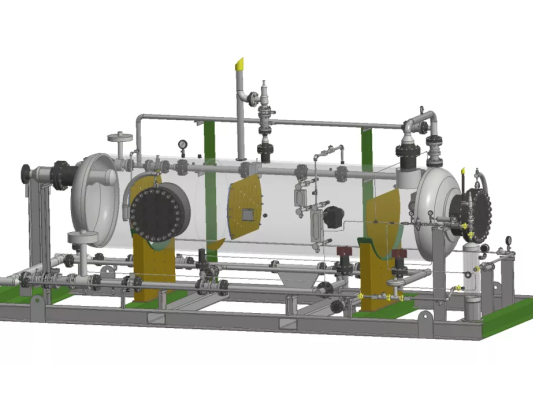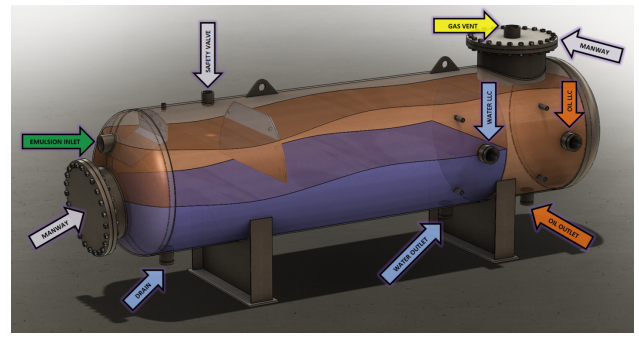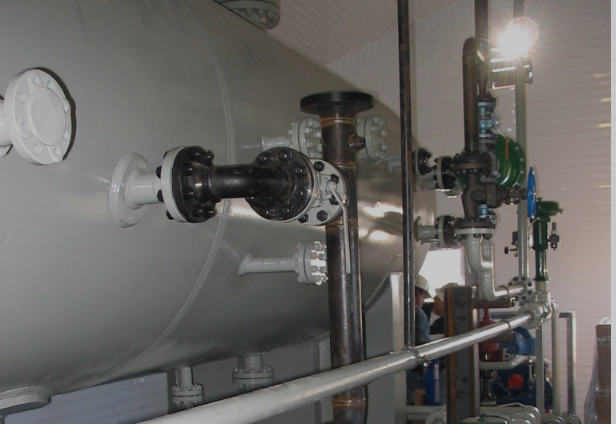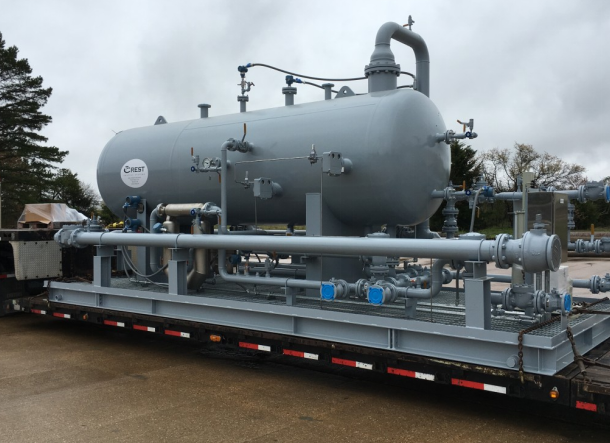



Two-phase vapor-liquid separators are used in many industries including oil refineries, chemical plants, refrigeration systems, natural gas and petrochemical processing plants.
Depending on the specific application and the vapor-liquid mixture being separated, two-phase vessels can be oriented vertically or horizontally. In their simplest form, they are an empty tank that’s used to reduce the velocity of a fluid on entry, thus allowing the liquid to fall to the bottom of the vessel and the vapor to rise to the top. Most separators include internal devices that assist in the separation process, such as:
• An inlet diverter – An inlet diverter includes a downcomer that directs the inlet flow below the liquid level in the tank. This has the effect of stabilizing the liquid level while preventing splattering and foaming.
• A mist eliminator – A mist eliminator removes liquid droplets entrained with the gas.
Liquid-Liquid Separators
As their name indicates, liquid-liquid separators are used to separate two immiscible liquids, like oil and water. The viscosity, specific gravity and interfacial tension of the two liquids must be considered when designing this separator.
If the difference in density between the two liquids is large, separation can be achieved through gravity separation. In such instances, the heavier liquid is drawn off the bottom of the tank and the lighter liquid off the top. Otherwise, a coalescer can be used to facilitate liquid-liquid separation using plastic, polymer, wool or fiberglass as a coalescing medium.
Solid-Liquid Separators
Solid-liquid separation is normally achieved through filtration, settling or centrifugation. These types of separators utilize filters, which contain a porous medium that retains suspended solids as the mixture passes through it. Settlers are normally tanks of very basic design that facilitate the settling of solids to the bottom of the vessel by gravity.
Separators are designed in either horizontal, vertical, or spherical configurations. Figure 4-1 is a schematic of a horizontal separator. The fluid enters the separator and hits an inlet diverter causing a sudden change in momentum. The initial gross separation of liquid and vapor occurs at the inlet diverter. The force of gravity causes the liquid droplets to fall out of the gas stream to the bottom of the vessel where it is collected. This liquid collection section provides the retention time required to let entrained gas evolve out of the oil and rise to the vapor space. It also provides a surge volume, if necessary, to handle intermittent slugs of liquid. The liquid then leaves the vessel through the liquid dump valve. The liquid dump valve is regulated by a level controller. The level controller senses changes in liquid level and controls the dump valve accordingly.
![1536564327561509.png MQ%)}95_$ELD]EUBGYMVZQ4.png](/ueditor/php/upload/image/20180910/1536564327561509.png)
The gas flows over the inlet diverter and then horizontally through the gravity settling section above the liquid. As the gas flows through this section, small drops of liquid that were entrained in the gas and not separated by the inlet diverter are separated out by gravity and fall to the gas liquid interface.
Some of the drops are of such a small diameter that they are not easily separated in the gravity settling section. Before the gas leaves the vessel it passes through a coalescing section or mist extractor. This section uses elements of vanes, wire mesh, or plates to coalesce and remove the very small droplets of liquid in one final separation before the gas leaves the vessel.
The pressure in the separator is maintained by a pressure controller. The pressure controller senses changes in the pressure in the separator and sends a signal to either open or close the pressure control valve accordingly. By controlling the rate at which gas leaves the vapor space of the vessel the pressure in the vessel is maintained. Normally, horizontal separators are operated half full of liquid to maximize the surface area of the gas liquid interface.